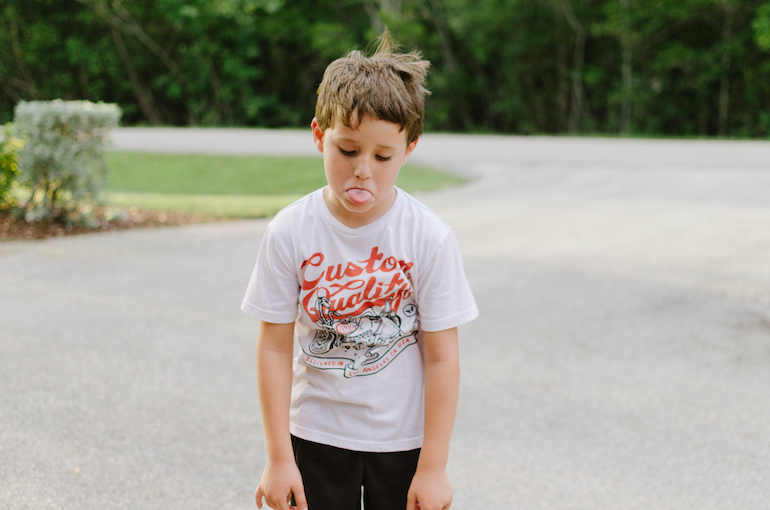How to handle your child's sugar withdrawals
Sugar addiction is a common occurrence amongst kids thanks to their high intake of processed foods. As a result, children can experience sugar withdrawals with many unwanted symptoms.
Today our children have grown up on a diet of refined sugar found in our bread, cereals, juices, muesli bars and biscuits. While most of us know that too much sugar is bad for our kids, with so much sugar lurking in foods, it's easy to consume more than the recommended amount.
The World Health Organisation recommends adults consume less than 6 teaspoons (25g) of added sugar a day and children should consume even less. A four-year-old should have less than 3 teaspoons of sugar a day. Children under the age of two should have no added sugar at all.
Sugar is a hard food to quit. In fact, there is research that suggests sugar creates cravings and activates the brain’s reward system similar in magnitude to illegal drugs, nicotine and morphine as it triggers the release of dopamine.
How to handle your child's sugar withdrawals
If you're trying to reduce your child's sugar intake you may have experienced some unwanted withdrawal symptoms such as moodiness and tantrums. Just like adults, children may experience headaches, cravings, brain fog, fatigue, changes in sleep patterns and anxiety.
As you consume sugar, your child becomes tolerant to its effects and your body requires more to get the same rush. This means when you try to cut sugar from their diet, the cravings they experience can be pretty intense.
Here are some quick tips on how to help your child navigate their sugar addition and withdrawals.
1. Make a plan
The best way to overcome your child’s addiction to sugar is to get refined sugar out of their diet. There are two ways you can do this so find what works for you and make a plan. The options are:
Go cold turkey - eliminate all sugars (refined and natural) including fruit, starchy vegetables and natural sweeteners such as honey for 3-5 days. After this period, slowly introduce fruit starting with low sugar options like berries and starchy vegetables in small quantities. Treat natural sweeteners as a special, occasional food. This will help put a end to the addiction quickly.
Slowly reduce their sugar consumption day by day - this can help reduce the severity of your child’s withdrawal symptoms but will delay getting over the addiction. One of the first places you can reduce their sugar intake is with sweetened beverages. Depending on how extreme their sugar withdrawals are, you could simply water down their drinks before transition to sugar free beverages like water. Focus on reducing any refined sugar foods your child is consuming before taking a look at their natural sugar intake.
2. Clean up your environment
Stop buying products containing refined sugar, even if you place it up high or hide it in a cupboard it is in their environment. Before you know it, these products will start slowly creeping into your child’s diet.
Need help cleaning up your environment? Book in for a pantry makeover where nutritionist Sarah Appleford will help you clean out your fridge and pantry and replace the ingredients with whole foods.
3. Encourage water
Encourage your child to drink water when they experience cravings. Often we mistake our thirst for hunger so drinking water and waiting 10-15 minutes may highlight you are just thirsty if the hunger is at bay. If transitioning to water is a challenge, try sweetening it naturally with slices of fresh fruit such as oranges or a mix of berries.
4. Add healthy fats
Healthy fats such as avocados, nuts, seeds and olive oil will help balance your child's blood sugar and keep them feeling fuller for longer. A small serve with each meal or snack will be enough to assist with satiety.
5. Consume naturally sweet vegetables
Vegetables such as carrots, sweet potatoes and pumpkin are naturally sweet, especially if roasted. This can help satisfy those taste buds as your child goes through the withdrawals.
6. Increase quality protein
As with healthy fats, quality protein will help with satiety and balance your blood sugar levels. Grass-fed meat, eggs, full-fat dairy, legumes and quinoa are all forms of quality protein.
7. Focus on adding foods
Instead of focusing on the foods your child can't eat, focus on the foods they can eat more of. As with any adjustment to a diet, it can be a shock to the system. It also requires a change in habits and routines, as well as a change in attitude. This can be a hard thing to do when you are addicted to the foods that are hurting you the most.
Focusing on adding foods is a much more sustainable way to make change and will help with your child’s sugar withdrawals long term. Start adding more protein, healthy fats and water.
8. get your child moving
Staying active is one of the best ways to curb the cravings of sugar. Remember, exercise increases your endorphins and will naturally lift your child’s mood. Even just 15 minutes of walking has been seen to reduce reduce cravings.
Encourage your child to partake in some of their favourite activities such as kicking a soccer ball, going for a bike ride, playing tag. If you do it together or with friends as a social activity this will also enhance the benefits and distract from the sugar.
9. Ditch the sugar too
If you're trying to reduce your child's sugar, you should too! Remember, you are your child’s greatest role model. Start being a positive one by adopting a healthy whole food diet. This is one addiction your whole family can be proud of!

